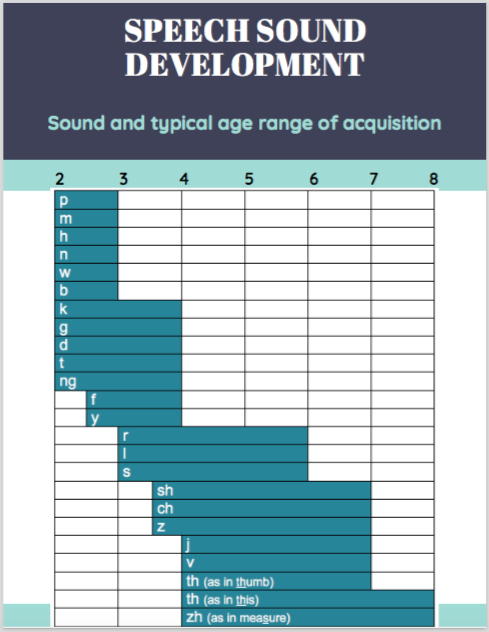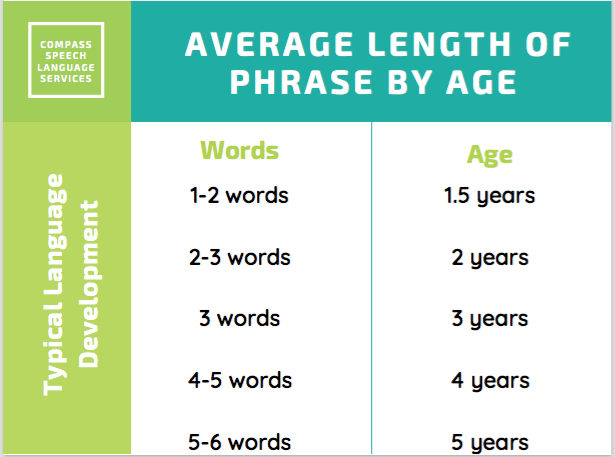Speech and Language Typical Development
Do you know the difference between speech and language? Because they don’t mean the same thing!
Speech is the way words sound. A person with a speech impairment might have slurred speech or have a hard time saying the right sounds. Sounds may sound distorted, or like a different sound altogether. For example, a child that says “wed” instead of “red”.
The graph below represents the typical age range for speech sound development. For example, sounds that are made with only your lips like P, M, and B are typically mastered between 2-3 years old. Harder sounds, like S and R are learned between 3-6 years old.

Language is the understanding and use of both spoken and written words, and the ability to use words to communicate a message. A person with a language impairment may have trouble following directions, or answering questions because they have difficulty understanding words.
They may also trouble finding the words they want to use, or formulating a sentence using the correct words. Maybe they have difficulty using plurals or pronouns appropriately. This usually also carries over into difficulty writing and reading.
The chart below looks at the typical length of a phrase or sentence by age. For example, a 2 year old’s typical phrase length is 2-3 words (“my milk” or “come mommy”). By 5 years, most children are communicating with 5-6 words in a sentence (“I saw a puppy today!”)

Children’s brains are prime for learning speech and language. This is why I recommend early intervention. If you have a question regarding your child’s speech or language development, or are wondering if your child is falling behind, schedule a speech therapy evaluation. The sooner the better! Early intervention usually results in better outcomes.
Call me today to schedule your appointment. I also offer a free phone consultation!
*Charts and graphs based off of ASHA’s Speech Development Chart and Brown’s morphemes (Brown, R. (1973). A first language: The early stages. London: George Allen & Unwin).